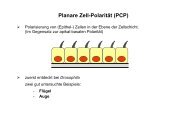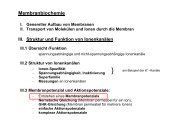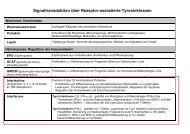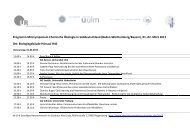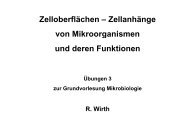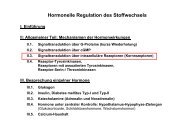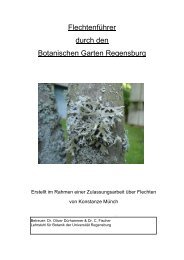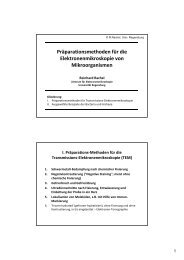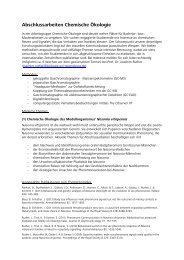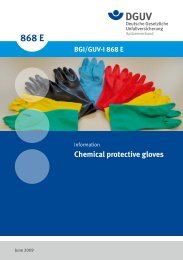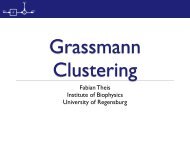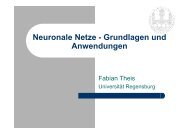PhD thesis
PhD thesis
PhD thesis
You also want an ePaper? Increase the reach of your titles
YUMPU automatically turns print PDFs into web optimized ePapers that Google loves.
either benefit directly, if males vary in the ability to provide essential resources to the females<br />
(Halliday 1983; Vahed 1998), or indirectly, if offspring quality depends on the genetic<br />
background of the male. Several models have been proposed to explain female choice based on<br />
indirect benefits, the most prominent of these being the “good genes” model that predicts the<br />
occurrence of certain males with good genes that are the best choice for all females (Andersson<br />
1994; Johnstone 1995; Wilkinson et al. 1998; Moller & Alatalo 1999; Tomkins & Simmons<br />
1999; Hine et al. 2002; Kokko et al. 2002), and the model of the “best<br />
compatibility/complementarity” assuming that one particular male is the best choice for a<br />
particular female (Halliday 1983; Johnsen et al. 2000; Tregenza & Wedell 2000; Colegrave et<br />
al. 2002; Reinhold 2002).<br />
The genetic compatibility of a mate depends – among other factors – on the degree of<br />
relatedness which ranges from strict inbreeding to maximal outbreeding. Both in- and<br />
outbreeding have certain advantages (Partridge 1983) and disadvantages for reproduction<br />
(Bateson 1983; Pusey & Wolf 1996). According to the model of optimal outbreeding, females<br />
should choose a mate of a certain genetic difference to balance the costs of in- and outbreeding<br />
(Bischof 1972; Alexander 1977; Bateson 1983), avoiding both inbreeding depression and the<br />
break-up of local adaptations.<br />
In hymenoptera, deleterious mutations, which have severe consequences in inbred diploid<br />
organisms, usually disappear quickly due to the haploidy of males (Goldstein 1994; Smith 2000;<br />
Henter 2003). Nevertheless, inbreeding may have especially high costs in most hymenoptera<br />
owing to the predominant mechanism of sex-determination, the single-locus complementary<br />
sex-determination (sl-CSD) (Cook 1993; Haig 1998; Beye et al. 2003). Normally, unfertilized<br />
(haploid) hymenopteran eggs develop into males, whereas fertilized (diploid) eggs develop into<br />
females. However, diploid animals that are homozygous at the sex-determination locus develop<br />
into diploid males, which are usually sterile (Cook 1993; Owen & Packer 1994; Cook & Crozier<br />
1995). Since inbreeding increases the proportion of homozygosity and therefore the occurrence<br />
of diploid males, matings between close kin should be strongly selected against in hymenoptera<br />
with sl-CSD. Thus, inbreeding avoidance should be an especially important factor in the context<br />
of female choice in hymenoptera.<br />
1.2.2 Pheromones and mate choice<br />
In species with female choice, indicator mechanisms must be present that allow the assessment<br />
of a potential mate’s quality. To avoid cheating, these signals have to be honest, which is<br />
usually the case if they inflict costs on the males, because this leads to a correlation between<br />
signal production and mate quality (Zahavi 1975). Many studies have demonstrated adaptive<br />
16



